Creating a family bank is a powerful strategy for building wealth, preserving a legacy, and creating a financial system that benefits multiple generations. This approach, famously associated with wealthy families like the Rockefellers, enables you to grow, access, and transfer wealth in a way that provides stability, liquidity, and long-term security.
In this blog post, we’ll explore what a family bank is, how it works using a whole life insurance policy, why families like the Rockefellers use this strategy, and how you can set one up for your own family. We’ll also discuss the benefits, potential drawbacks, and key steps to creating a sustainable family bank that can serve your family’s needs for generations.
What is a Family Bank?
A family bank is not a literal bank with branches or tellers but a strategy for using life insurance and other financial vehicles to create a private source of financing and wealth building within a family. This concept revolves around the idea of using family-controlled resources to fund family needs, whether it’s starting a new business, funding a child’s education, making investments, or providing for emergencies.
The core of a family bank is a pool of money that the family controls, which can be used strategically to achieve both individual and collective financial goals. By using dividend-paying whole life insurance as the foundation, families can access cash value to loan money to family members, essentially becoming their own bankers.
Why Use Whole Life Insurance to Create a Family Bank?
Dividend-paying whole life insurance is a key tool in creating a family bank due to its unique features:
- Cash Value Growth: Whole life insurance policies build cash value over time, which grows tax-deferred. This cash value can be accessed through policy loans, providing liquidity when needed.
- Guaranteed Death Benefit: The death benefit ensures that the family bank is funded for future generations, offering financial stability and continuity.
- Dividend Payments: Policies from mutual life insurance companies may pay dividends, which can be reinvested to increase the policy’s cash value, providing a compound growth effect.
- Tax Advantages: The cash value grows tax-deferred, policy loans are typically not taxable, and death benefits are generally paid out to beneficiaries income tax-free.
- Liquidity and Control: Unlike traditional bank loans, borrowing from a life insurance policy involves no credit checks, and repayment terms are flexible, allowing the policyholder to control the loan process.
How the Rockefellers Use the Family Bank Concept
The Rockefellers are one of the wealthiest families in American history, known not just for their wealth but for their ability to sustain and grow it across multiple generations. A key part of their strategy has been using life insurance to create a family bank, allowing them to fund businesses, support education, and make strategic investments—all while maintaining control over their wealth.
The Rockefellers’ family bank strategy revolves around these principles:
- Centralized Wealth Management: By pooling resources into a family bank, they have centralized control over the family’s finances, enabling coordinated investments and spending.
- Inter-Generational Support: The family bank provides a mechanism for supporting future generations through strategic loans rather than outright gifts, fostering financial discipline.
- Use of Life Insurance Policies: By using dividend-paying whole life insurance, the Rockefellers have been able to build up cash value, access liquidity for various needs, and ensure that future generations benefit from the policy’s death benefit.
How to Create a Family Bank with Whole Life Insurance
Establishing a family bank using a whole life insurance policy involves several key steps.
Here’s a step-by-step guide to creating your own family bank:
1. Choose the Right Life Insurance Policy
The foundation of your family bank is a dividend-paying whole life insurance policy with a reputable mutual insurance company. Mutual companies are ideal because they are owned by their policyholders and typically offer better dividends and stability.
- Look for policies that allow for paid-up additions (PUAs), which let you increase the policy’s cash value quickly.
- Ensure that the policy is structured for maximum cash value growth, which might involve overfunding the policy with higher premiums to build cash value faster.
2. Fund the Policy
To build a robust family bank, the policy must be adequately funded. The initial premiums will determine the speed at which your cash value grows, and overfunding through PUAs can accelerate this process.
- You can start with a single policy or multiple policies on different family members, including children and grandchildren, to create a network of life insurance coverage that benefits the entire family.
- Consider using existing savings or reallocating funds from low-yield accounts to maximize the initial policy funding.
3. Build Up Cash Value
As you pay premiums, your policy’s cash value will grow. The cash value is the money you can borrow against, and it functions as the bank’s capital.
- Dividends from the policy can be used to purchase PUAs, further increasing the cash value.
- The more cash value you have, the larger the loan amounts you can take, which increases the flexibility of your family bank.
4. Borrow Against the Cash Value
Once your policy has sufficient cash value, you can begin to borrow against it for various family needs. Policy loans are a key component of the family bank concept because they provide liquidity without the need to liquidate investments or other assets.
- Policy Loans: These are loans taken against the cash value of the life insurance policy. The insurer holds the cash value as collateral, and you continue earning dividends on the full cash value even while you have an outstanding loan.
- No Credit Check: Unlike traditional bank loans, policy loans don’t require a credit check, and repayment terms are flexible. You essentially act as your own banker.
- Uses of Loans: These loans can be used for anything—funding a new business venture, paying for a child’s education, purchasing property, or covering emergencies.
5. Repay Loans and Replenish the Bank
To keep the family bank sustainable, it’s important to treat policy loans as you would any other loan and repay them with interest. This repayment approach allows the cash value to continue growing and ensures that the funds are available for future needs.
- You can set your own repayment schedule, making it easier to manage cash flow.
- Any interest paid on the policy loan goes back into the policy’s cash value, which helps to rebuild the family bank’s reserves.
6. Utilize the Death Benefit for Legacy Planning
One of the key advantages of using whole life insurance in a family bank strategy is the death benefit. When a policyholder passes away, the death benefit is paid to the beneficiaries.
- Use the death benefit to replenish the family bank and support future generations.
- The death benefit can provide a tax-free inheritance, ensuring that the family bank remains well-funded and can continue to support the family’s financial goals.
Strategies and Applications of a Family Bank
A family bank can be used in various ways to benefit the entire family. Here are a few strategic applications:
- Funding Education: Instead of taking out student loans, families can use the family bank to provide low-interest loans to children or grandchildren for education expenses, with the expectation that the loans will be repaid.
- Starting a Business: Family members who need capital to start a new business can borrow from the family bank, allowing them to avoid traditional lenders and retain control of their venture.
- Real Estate Investment: A family bank can provide funds for down payments on real estate investments, enabling the family to build a real estate portfolio while keeping the interest payments within the family.
- Emergency Fund: The family bank can act as a reserve for unexpected emergencies, providing quick access to funds without the penalties or delays that come with other types of savings or investment accounts.
Benefits of a Family Bank with Whole Life Insurance
- Tax Advantages: Cash value growth, policy loans, and death benefits all come with significant tax benefits, which can help preserve wealth.
- Control and Flexibility: Families maintain control over the lending process, including loan amounts, terms, and interest rates.
- Generational Wealth Building: A family bank provides a mechanism for transferring wealth in a structured way, ensuring that future generations have access to capital and opportunities.
- Financial Discipline: By requiring loans to be repaid, a family bank encourages financial responsibility and stewardship among family members.
Potential Drawbacks
- Initial Costs: Whole life insurance policies can be expensive, especially if structured for high cash value. It may take several years before the cash value grows significantly.
- Commitment to Premiums: Policies require regular premium payments to maintain, which can be a burden if cash flow becomes tight.
- Complexity: Setting up a family bank requires careful planning and knowledge of both life insurance and family governance structures.
Establishing a family bank using a dividend-paying whole life insurance policy is a time-tested strategy for creating financial independence, stability, and generational wealth. Like the Rockefellers, you can create a system that gives your family access to capital, fosters financial responsibility, and protects your legacy for decades to come.
By carefully selecting a whole life insurance policy, funding it, and using the cash value wisely, you can transform this financial vehicle into a private banking system that meets your family’s unique needs. With the right strategy, your family can gain the same benefits that have kept the Rockefellers wealthy for generations: liquidity, control, and the ability to fund your own dreams.
Watch all of our educational videos on Infinite Banking here.
Disclaimer and Waiver
Michiel Laubscher & Laubscher Wealth Management LLC is not an investment advisor and is not licensed to sell securities. None of the information provided is intended as investment, tax, accounting, or legal advice, as an offer or solicitation of an offer to buy or sell, or as an endorsement, of any company, security, fund, or other offerings. The information should not be relied upon for purposes of transacting securities or other investments. Your use of the information contained herein is at your own risk. The content is provided ‘as is’ and without warranties, either expressed or implied. Michiel Laubscher & Laubscher Wealth Management LLC does not promise or guarantee any income or specific result from using the information contained herein and is not liable for any loss or damage caused by your reliance on the information contained herein. Always seek the advice of professionals, as appropriate, regarding the evaluation of any specific information, opinion, or other content.





